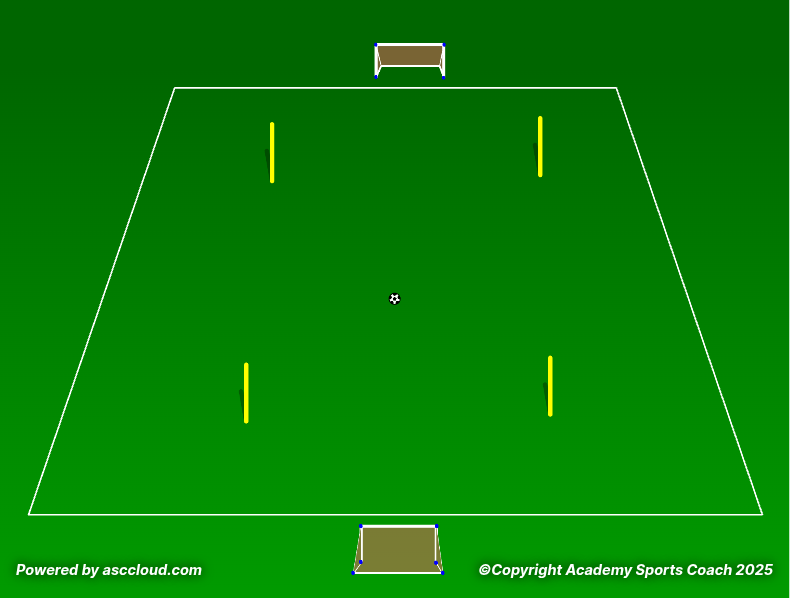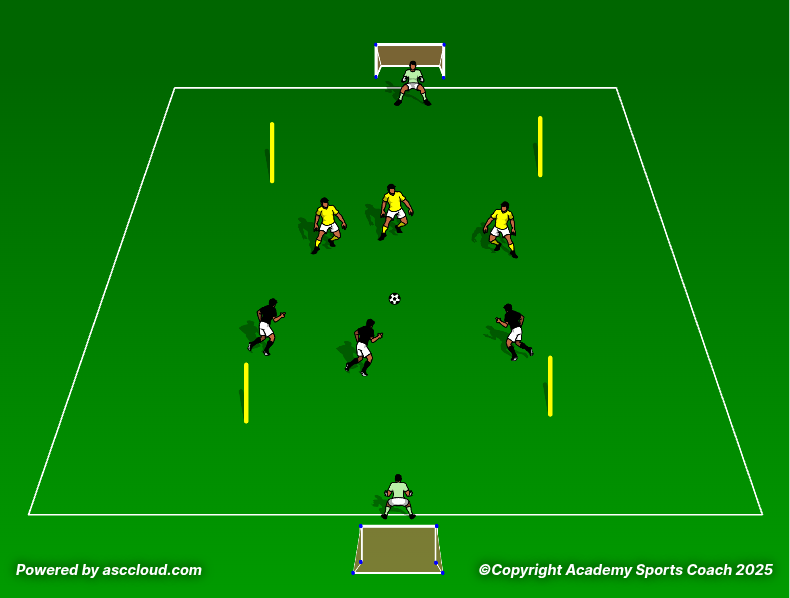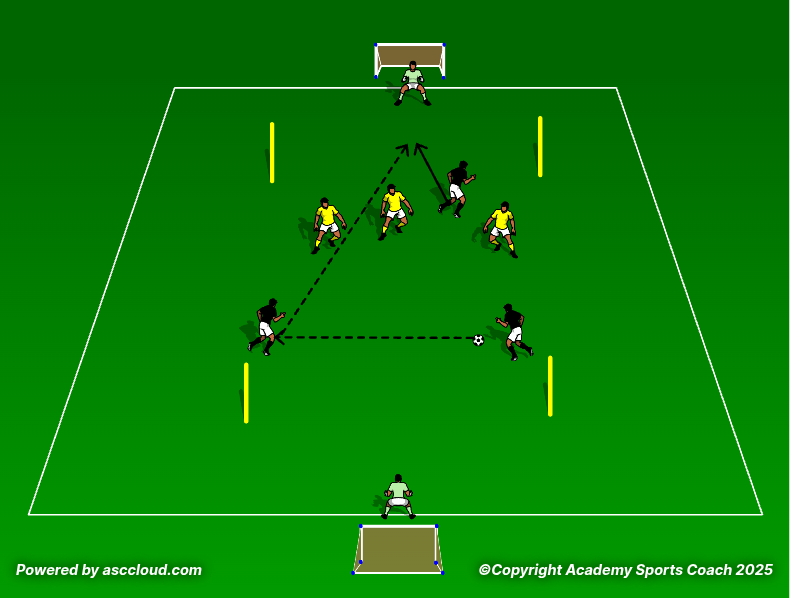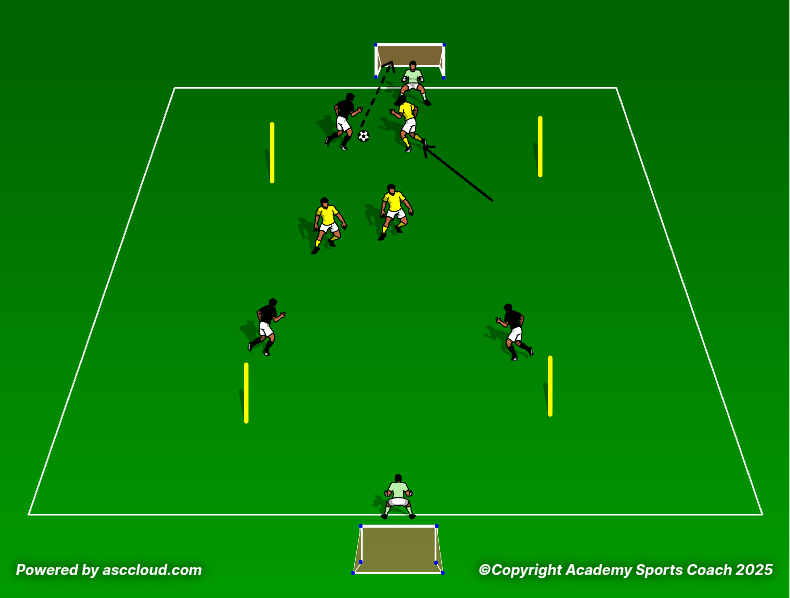By Matt Carroll
Your team has connected six crisp passes utilizing a variety of angles and passing techniques. Your striker takes advantage of the defense’s momentary mistake and makes a line-breaking run to beat the offside trap. A perfect ball is played to their feet, you can feel the electricity on the bench, surely a goal has to be coming…. And it goes wide. If you have experienced this moment, or a similar one where the ball comes too late, leading to the striker running offside, then the Break the Bank Game is for you.

The Break the Bank game starts with two teams in a grid that is approximately 30x30, depending on the number of players. 15-20 Yards on each side of the box ,you create an additional grid with a goal on the far side from the box with a keeper. Alternately, you could place pug goals to replace the goals. The number of players on the two teams in the drill can vary, but likely four would be the minimum per team.

The drill starts with an inbound, and both teams attempt to win the ball and maintain possession. A pass limit should be set, say 4-5 passes, that allows the players to “break the bank,” meaning a ball can be played into the side grids, leading to a scoring opportunity. The last player to receive a pass before hitting the limit, meaning if you set the passes to 5, the player receiving the 4th pass can play the ball into the adjacent grids. This simulates the moment of the line breaking pass to an onrushing striker. The pass must be played prior to the attacking player leaving the grid, which will simulate the offside trap.

An alternative to this would be time of possession before you pass, replacing the set number limit of passes. Another variable that can be set is which grid the players can enter, you could set it so a team can score on either goal, making the game more challenging for the defense, or set the team a specific goal they must score on.
Once the bank has been broken, the player who received the 5+ passes enters the adjacent grid. A restriction should be set here on how many touches that player can take before they must shoot, likely in the range of 2-3. Alternatives to these restrictions could be, once the pass enters the goal grid, an opposition defender can enter the grid, creating a 1v1 situation. Another alternative could be that for every touch they tak,e another defender can enter the grid. If the player cannot score in the allotted touches, or the defense wins the ball, the ball is then reset in the grid via a 50/50 ball

The game should be set either by a time limit or “first to #” restriction, and the team that scores the most goals, or reaches the target first, wins.
By Matt Carroll


